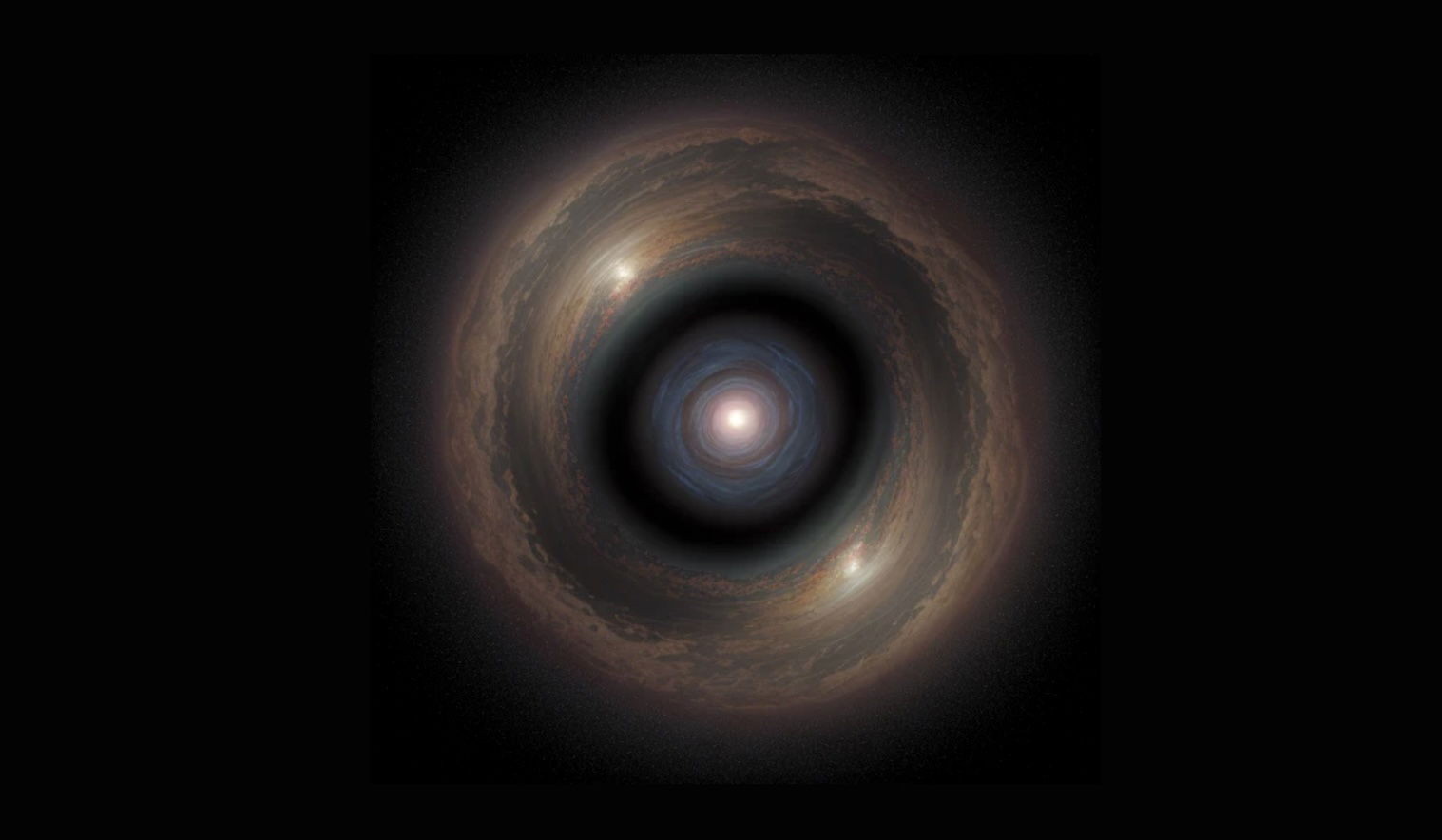The universe’s expansion may be driven by “transient temporal singularities”—rapid, invisible bursts of energy—rather than dark matter or dark energy, according to new research that challenges the widely accepted standard model of cosmology.
The theory, proposed by Dr. Richard Lieu, a professor of physics at The University of Alabama in Huntsville (UAH), argues that the “steps” of these singularities offer a better explanation for the universe’s origins than the idea of a single Big Bang.
The groundbreaking theory proposes that these fleeting bursts could help resolve longstanding questions about cosmic expansion and galaxy formation, without having to rely on theoretical constructs like dark matter and dark energy, which are widely featured in existing models attempting to explain such phenomena.
“This new paper proposes an improved version of the earlier model, which is also radically different,” Lieu said in a recent statement. “The new model can account for both structure formation and stability, and the key observational properties of the expansion of the universe at large, by enlisting density singularities in time that uniformly affect all space to replace conventional dark matter and dark energy.”
A New Challenge to the Standard Model of Cosmology
Lieu’s model is an extension of previous research that already put forward a remarkable possibility: that gravity may be able to exist independently from mass. Unlike other speculative theories that attempt to account for unexplained phenomena in our universe, Lieu’s new work avoids exotic components such as negative mass or negative density, arguing instead that sudden, discreet “transient temporal singularities” are responsible for filling the universe with matter and energy.
These mysterious bursts remain undetected by astrophysicists because of the incredible speed and infrequency of their occurrence, allowing them to evade detection. Unlike the steady-state theory, a concept proposed by Sir Fred Hoyle that argues the ongoing creation of matter in our universe, Lieu’s new theory avoids violating the mass-energy conservation laws.
“In the current theory, the conjecture is for matter and energy to appear and disappear in sudden bursts,” Lieu says. “These singularities are unobservable because they occur rarely in time and are unresolvedly fast, and that could be the reason why dark matter and dark energy have not been found.”
Solving the Riddle of Cosmic Acceleration
Another longstanding cosmic mystery—what drives cosmic acceleration—is also accounted for by Lieu’s new theory, thanks to “negative pressure” that results from the generation of these undetectable singularities. Intriguingly, Lieu says that the phenomenon in question is described in Einstein’s early work, and may arise from energy densities like magnetic fields, thereby contributing to universal expansion.
“Einstein also postulated negative pressure in his 1917 paper on the Cosmological Constant,” Lieu says. “When positive mass-energy density is combined with negative pressure, there are some restrictions which ensure the mass-energy density remains positive with respect to any uniformly moving observer, so the negative density assumption is avoided in the new model.”
Are Dark Energy and Dark Matter “Omnipresent”?
While many regard dark energy and dark matter as being ubiquitous throughout the universe, Lieu challenges this widely accepted idea, arguing they “are not omnipresent” but instead “only appear in brief instances during which the matter and energy do fill the entire universe uniformly, apart from random spatial density variations which grow to form bound structures like galaxies.”
In between these cosmic occurrences, Lieu says dark energy and dark matter “are not to be found anywhere.” However, Lieu argues that there is only one fundamental difference between what his new theory proposes and the currently accepted standard model, which comes down to timing. The standard model assumes a single, one-time singularity—the Big Bang—whereas Lieu’s model envisions multiple singularities unfolding throughout cosmic history.
No Need for Advanced Space Observatories for Testing
As an added benefit to his groundbreaking theory, Lieu says that the alternative framework he puts forward could be tested using Earth-based instruments, as opposed to having to rely on advanced space-based observatories. Good candidates for testing his theory include the Keck Observatory in Hawaii or the Isaac Newton Group of Telescopes in Spain, which he says could conduct deep-field observations sliced by redshift to detect anomalies in cosmic expansion.
“Given sufficient redshift (or, equivalently, time) resolution effected by the redshift slicing, one might just find that the Hubble diagram exhibits jumps in the redshift distance relation, which would be very revealing,” Lieu said.
The new study, “Are dark matter and dark energy omnipresent?” was published in the journal Classical and Quantum Gravity.
Micah Hanks is the Editor-in-Chief and Co-Founder of The Debrief. He can be reached by email at micah@thedebrief.org. Follow his work at micahhanks.com and on X: @MicahHanks.

